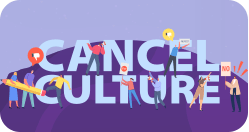Where to apply to college is one of the most difficult decisions in a student's life and probably the first one of such life-defining caliber. That is why college ratings exist. Despite looking like some kind of college pageants where elite schools compete for the title of the coolest of them all, these ratings are useful assessment tools with some serious math behind them. They help students to focus on schools' crucial characteristics and narrow their lists down to several most relevant names.
Two of the thorough and renowned lists, the U.S. News & World Report Best Colleges rankings and Forbes' 500 Top Colleges list, have released their updated versions for the current academic year, and they show some striking differences in relation to the past years.
If you are a college hopeful still considering your options, it's a great place to start before you craft your own shortlist. Grab a cup of coffee! Let's see what is new in the world of American higher education.
By the way, don't forget that our paper writing service will gladly assist you with your personal essay and any other school-specific writing supplements you might need once you are ready to apply.
What's New?
The first thing that stands out is the discrepancy: no college takes the same place in both ratings. In fact, overlap includes only 6 schools out of ten. MIT, Stanford, Princeton, Yale, Duke, and UPenn are present in both top 10 lineups, albeit in different positions. The rest varies.
However, we still can see clear leaders: MIT is going strong, topping the Forbes list for the first time ever and coming second on the U.S. News chart. Princeton is another favorite, rated the fourth best by Forbes and leading the pack as number one according to U.S. News. The bronze goes to Stanford, which has been named second by Forbes and fourth by U.S. News.
Here is a side-by-side comparison of both rankings:
| Top 10 According to Forbes |
|---|
| Top 10 According to U.S. News |
| Massachusetts Institute of Technology, MA |
| Princeton University, NJ |
| Stanford University, CA |
| Massachusetts Institute of Technology, MA |
| University of California, Berkeley, CA |
| Harvard University, MA |
| Princeton University, NJ |
| Stanford University, CA |
| Columbia University, NY |
| Yale University, CT |
| University of California, Los Angeles, CA |
| University of Chicago, IL |
| Williams College, MA |
| Johns Hopkins University, MD |
| Yale University, CT |
| University of Pennsylvania, PA |
| Duke University, NC |
| California Institute of Technology, CA |
| University of Pennsylvania, PA |
| Duke University, NC tie with Northwestern University, IL |
What might surprise you at first glance is the glowering absence of Harvard University in the Top 10 and overall low positions of Ivy League schools in the Forbes ranking this year. We will take a closer look at the reasons behind this further down.
Another notable change is the rise of private colleges such as Duke University and Williams College. One might also point out the abundance of California-based schools in both rankings. Perhaps it is some kind of halo effect because of the close proximity to Silicon Valley.
One also cannot fail to notice that schools traditionally focusing on STEM majors do better on both ratings than their more humanities-oriented counterparts. This is probably because graduates' later success in life factors heavily in the school's position. IT, Data Analytics, Cloud Computing, Green Energy, Electronics, and other industries are booming, providing plenty of opportunities for the freshly graduated specialists, thus propelling their Alma Maters up in the ranking.
Why the Changes?
Apart from global market demands, other macro factors influenced the outcomes. One of the most powerful was, of course, COVID-19. The creators of the Forbes rating attribute the elite schools' slide down to fallen retention rates that hit Harvard and other Ivies harder than other colleges during the two years of the pandemic. However, Ivy League schools do way better on the U.S. News list, so what's the deal?
The Ivy League schools' decline in the Forbes rating must be due to the way retention rates are factored in. The U.S. News attributes only 4.4% to the average first-year student retention rate (a proportion of first-year students who returned for their sophomore year) while giving 17.6% to overall graduation rates (the ratio of students earning bachelor's degrees to those entering class). Moreover, an additional 8% is awarded based on the graduation performance by comparing the predicted graduation rate for a school in 2014-2015 with actual rates for these classes. Predictions are made based on students' socioeconomic backgrounds, admissions data, school financial resources and science orientation. The more school exceeded expectations, the higher the indicator.
Forbes, on the other hand, gives more weight to the first-year retention rate, even if freshmen didn't return to school next fall due to leave of absence or temporary visa restrictions for international students. This particular metric took a nosedive for elite schools during the trying times of the COVID-19 pandemic. Compared with the usual 98-99%, only 83% of Princeton first-year students returned for the second year in the fall of 2020, 76% returned to Harvard, and only 65% came back as sophomores to Yale. These numbers are staggering. They might indicate that the nonacademic elements like social life, athletics, networking, and other strictly campus experiences play a significant part in the elite schools' appeal to the students.
By comparison, MIT did fine on this metric regardless of the pandemic challenges and retained 98% of its former first-year students for the second year. This steadiness speaks of the academic and research preferences among students choosing MIT.
With that in mind, we can predict that Harvard and other Ivies might bounce back after life stabilizes and college experiences valued so highly by their fans will once again be on the table.
Rating Revamp
Another reason for this reshuffle pointed out by the Forbes analysts is the poor performance of Ivy League institutions (and Harvard in particular) on the Pell index. It shows how well a college serves low-income students as the engine of economic mobility. The last metric contributes up to 5% to the overall rating.
However, the U.S. News rating also includes the "Social Mobility" factor based on Pell Grant. It attributes 2.5% to Pell Grant graduation rates and another 2.5% to Pell Grant recipients' performance after graduation, totaling the same 5% of the rating. Both rankings include a six-year span of data to assess the success after graduation, so this factor cannot be the main reason for this difference in performance.
The discrepancy comes from the fact that Forbes also factors in the percentage of Pell Grant recipients enrolled. For example, although low-income students who attend Harvard eventually become very successful, the school enrolls too few – only 11%. This means the school's benefits are mainly reserved for those who can afford them. Indeed, one can see a pattern. The more Pell Grant recipients are enrolled, the better the school does on the Forbes list:
- Princeton – 21%, ranking 4th
- Yale – 18%, ranking 8th
- Dartmouth – 16%, ranking 14th
- Brown University – 13%, ranking 19th
- and so on.
This tells us that Forbes has changed how they calculate college ratings to better reflect each school's potential for propelling its students to success regardless of their socioeconomic background. To that effect, they have also paid particular attention to the number of students that took out a loan to attend each particular school. Another variable looked at who of those borrowing graduated with less debt.
The Bottom Line
Overall, what looks like a tectonic perturbation is, in fact, only a slight shift. The truth is that schools traditionally featured on both ratings all offer excellent education and college experience, set their students up for successful careers, and graduate high-earners and influential leaders. They rank so closely and tie so often that even the slightest change immediately reflects as a dramatic rise or fall in the ranking. So don't feel discouraged if your favorite didn't make it to the very top. Maybe your class will bring it back to the spotlight with your successes and achievements six years down the line!










